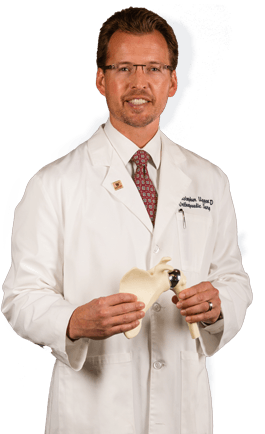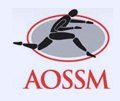Elbow
Conditions
Elbow Injuries in the Throwing Athlete
An athlete uses an overhand throw to achieve great speed and distance. Repetitive throwing in sports such as baseball place a lot of stress on the joints of the arm and can lead to injuries to the structures in the elbow.
Throwing injuries can produce pain, numbness or tingling, reduction in the throwing velocity, and loss of throwing control. When you present with symptoms of a throwing injury, your doctor will review your medical history, discuss your athletic activities, and perform a thorough physical examination to examine the strength, range of motion, and stability of your elbow.
Tennis Elbow
Tennis elbow is the common name used for the elbow condition called lateral epicondylitis. It is an overuse injury that causes inflammation of the tendons that attach to the bony prominence on the outside of the elbow (lateral epicondyle). It is a painful condition occurring from repeated muscle contractions at the forearm that leads to inflammation and micro tears in the tendons that attach to the lateral epicondyle. The condition is more common in sports activities such as tennis, painting, hammering, typing, gardening and playing musical instruments. Patients with tennis elbow experience elbow pain or burning that gradually worsens and a weakened grip
Biceps Rupture
The biceps muscle is located in front of your upper arm. It helps in bending your elbow as well as in rotational movements of your forearm. Also, it helps to maintain stability in the shoulder joint. The biceps muscle has three tendons, two attach it to the bones in the shoulder (long and short heads) and one attaches at the elbow (distal biceps). If one of the biceps tendons ruptures at the shoulder, usually the other tendon is able to compensate and no surgery is needed. A cosmetic bump will be seen in the mid arm (popeye deformity) but usually full function returns without surgery. If a partial biceps tendon tear at the shoulder continues to cause pain, arthroscopic surgery to release the tendon or fix it in another location may be considered.
Ligament Injuries
The ulnar collateral ligament (UCL), also called medial collateral ligament, is located on the inside of the elbow and connects the ulna bone to the humerus bone. It is one of the main stabilizing ligaments in the elbow especially with overhead activities such as throwing and pitching. When this ligament is injured or torn iit can end a professional athlete’s career unless surgery is performed.
Chondral Injuries / OCD
Osteochondritis dessicans is a condition of loosening or detachment of a fragment of cartilage and underlying a bone in a joint. The fragment may be stable, loose, or completely detached from the cartilage or bone. The exact cause for osteochondritis dessicans remains unknown and certain factors such as trauma, fractures, sprains, or injury to the joint are considered to increase the risk of developing the condition. Following the injury or trauma, the bones in the area may be deprived of blood flow leading to necrosis and finally the bone fragment may break off.
Loose Body
Loose bodies are small loose fragments of cartilage or bone that float around the joint. The loose bodies can cause pain, swelling, locking and catching of the joint. Loose body causes include osteoarthritis, fractures, trauma, bone and cartilage inflammation, and benign tumors of the synovial membrane.
Cubital Tunnel Syndrome / Nerve Compression
Cubital Tunnel Syndrome is a condition characterized by compression of the ulnar nerve in an area of the elbow called the cubital tunnel.
The ulnar nerve travels down the back of the elbow behind the bony bump called the medial epicondyle and through a passageway called the cubital tunnel. The cubital tunnel is a narrow passageway on the inside of the elbow formed by bone, muscle, and ligaments with the ulnar nerve passing through its center. The roof of the cubital tunnel is covered with a soft tissue called fascia.
Elbow Arthritis
Although the elbows are not weight-bearing joints, they are very for the functioning of the upper limbs. Hence, even minor trauma or disease affecting the elbow may cause pain and limit the movements of the upper limbs. Arthritis is one of the common disease conditions affecting the elbow joint.
Procedures
Elbow Arthroscopy
Elbow arthroscopy, also referred to as keyhole or minimally invasive surgery, is performed through tiny incisions to evaluate and treat several elbow conditions.
Tennis Elbow Surgery
Tennis elbow, also called Lateral Epicondylitis, is a painful condition occurring from repeated muscle contractions in the forearm that leads to inflammation and micro-tears in the tendons that attach to the lateral epicondyle. The lateral epicondyle is the bony prominence that is felt on the outside of the elbow.
Biceps Repair
The biceps muscle is located in front of your upper arm. It helps in bending your elbow as well as in rotational movements of your forearm. Also, it helps to maintain stability in the shoulder joint. The biceps muscle has two tendon attachments at the shoulder and one tendon attachment at the elbow. The biceps tendon at the elbow is called the distal biceps tendon and if there is a tear in this tendon, you will have weakness moving your arm from the palm-down to palm-up position. Once the distal biceps tendon is torn it cannot grow back to the bone and heal by itself. Permanent weakness during rotatory movements of the forearm may occur if the tendon is not repaired surgically.
Tommy John surgery / Ligament Reconstruction
The ulnar collateral ligament (UCL) is one of the main stabilizing ligaments in the elbow and is involved especially with overhead activities such as throwing and pitching. When this ligament is injured it can end a professional athlete’s career unless surgery is performed.
Ulnar Nerve Decompression
The ulnar nerve is one of the main nerves in the arm that travels down from the neck behind a bony protuberance inside the elbow (medial epicondyle), under the muscles of the forearm and down the hand on the side of the palm, towards the little finger. The ulnar nerve helps in controlling most of the hand muscles which carry out fine movements as well as some bigger forearm muscles which help in making a strong grip.













